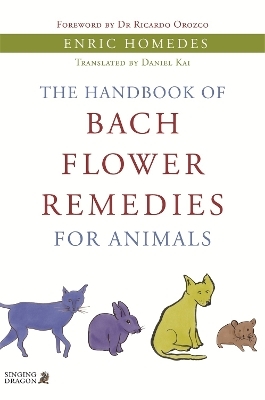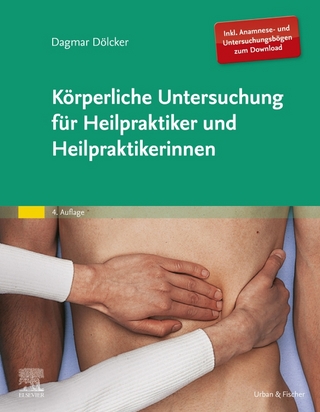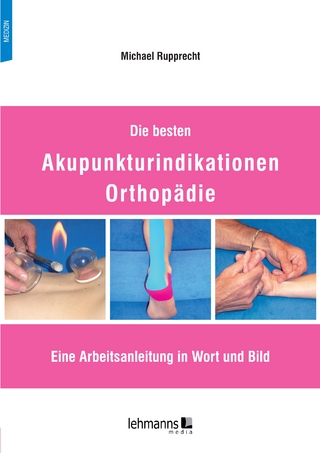
The Handbook of Bach Flower Remedies for Animals
Singing Dragon (Verlag)
978-1-84819-075-7 (ISBN)
Bach Flower Remedies are dilutions of flower material developed by Edward Bach, an English physician and homeopath, in the 1930s. This practical handbook explains how Bach Flower Remedies can be highly effective for treating both behavioural and physical complaints in animals.
Based on strong scientific research and detailed case studies, this book is a comprehensive resource that helps find solutions to common animal health and behaviour issues. The book lists each of the 38 flower remedies, explaining their properties and applications for both animals and humans. It then looks at specific animal ailments including conjunctivitis, allergies and phobias, and demonstrates how these problems can be successfully addressed using flower remedies. Practical advice about how to prepare and administer the remedies is included, as well as guidelines for using flower remedies in animal shelters.
This book will be a valuable addition to the bookshelves of all pet owners, animal shelter workers, vets, ethologists and anyone with an interest in complementary and alternative medicines.
Enric Homedes has been a professional Bach Flower Therapist since 1999 when he trained at the Edward Bach Institute. His professional activity involves therapy and tuition on the application of Bach Flower Remedies to humans and animals, and he is also a canine trainer. He is vice-president of SEDIBAC (The Society for the Study and Promotion of Bach Flower Remedies in Catalonia) and has organized and spoken at numerous congresses and conferences on Bach Flower Remedies.
Foreword by Dr Ricardo Orozco. Acknowledgements. Introduction. Who was Dr Edward Bach? 1. How to Prepare Flower Remedies for an Animal. Preparation of a remedy for oral application. Preparation of a remedy for local application. 2. Administering the Flower Remedies to Animals. Direct application. Indirect application. Concentrate formula. 3. Rescue Remedy. 4. Study of Each of the 38 Bach Flowers. 4.1. Agrimony (Agrimonia eupatoria). 4.2. Aspen (Populus tremula). 4.3. Beech (Fagus sylvatica). 4.4. Centaury (Centarium umbellatum). 4.5. Cerato (Ceratostisgma willmottiana) 4.6. Cherry Plum (Prunus cerasifera). 4.7. Chestnut Bud (Aesculus hippocastanum). 4.8. Chicory (Cichorium intybus). 4.9. Clematis (Clematis vitalba). 4.10. Crab Apple (Malus pumila). 4.11. Elm (Ulmus procera). 4.12. Gentian (Gentianella amarella). 4.13. Gorse (Ulex europaeus). 4.14. Heather (Calluna vulgaris). 4.15. Holly (Llex aquifolium). 4.16. Honeysuckle (Lonicera caprifolium). 4.17. Hornbeam (Carpinus betulus). 4.18. Impatiens (Impatiens glandulifera). 4.19. Larch (Larix deciduas). 4.20. Mimulus (Mimulus guttatus). 4.21. Mustard (Sinapis arvensis). 4.22. Oak (Quercus robur). 4.23. Olive (Olea europaea). 4.24. Pine (Pinus sylvestris). 4.25. Red Chestnut (Aesculus carnea). 4.26. Rock Rose (Helianthemum nummularium). 4.27. Rock Water. 4.28. Scleranthus (Scleranthus annus). 4.29. Star of Bethlehem (Ornithogalum umbellatum). 4.30. Sweet Chestnut (Castanea sativa). 4.31. Vervain (Verbena officinalis). 4.32. Vine (Vitis vinífera). 4.33. Walnut (Juglans regia). 4.34. Water Violet (Hottonia palustris). 4.35. White Chestnut (Aesculus hippocastanum). 4.36. Wild Oat (Bromus ramosus). 4.37. Wild Rose (Rosa canina). 4.38. Willow (Salix vitellina). 5. Most Frequent Behavioural Problems. 5.1. Aggressiveness. 5.2. Separation Anxiety. 5.3. Jealousy: A baby's arrival. 5.4. Coprophagia. 5.5. Depression/Sadness. 5.6. Defecation and Urination in Inappropriate Places. 5.7. Stereotypic Behaviour. 5.8. Stress. 5.9. Canine Hyperactivity Disorder. 5.10. Canine and Feline Filial Imprint. 5.11. Fear and Panic (phobia). 5.12. Pseudocyesis (psychological pregnancy). 5.13. Socialization. 6. A Selection of Cases Treated. 6.1. For Aggressiveness. 6.2. For Anxiety. 6.3. For Jealousy. 6.4. Feline Idiopathic Cystitis. 6.5. Cophrophagia. 6.6. Defecation and Urination in Inappropriate Places. 6.7. Kidney Failure. 6.8. Leishmaniasis. 6.9. Feline Chronic Megacolon and Megaesophagus. 6.10. For Fear and Panic. 6.11. Pseudocyesis (psychological pregnancy). 6.12. Feline Urological Syndrome (FUS). 6.13. Repetitive Cough and Early Stage Anemia. 7. A Selection of Cases Treated by Local Applications. 7.1. Allergies. 7.2. Pus Lumps. 7.3. Conjunctivitis. 7.4. Infection and Abscess of the Anal Glands. 7.5. Inflammation and Infection of the Third Eyelid. 7.6. Leishmaniasis. 7.7. Sores and Burns as a Result of Poisoning. 7.8. Mastitis. 7.9. Cutaneous Nodule of Unknown Etiology. 7.10. Traumatism. 8. Work Methodology for Animal Shelters: Formulas and Guidelines. Treatments addressed to recently arrived animals. Treatments for animals leaving the shelter for adoption or foster care. Local treatments. Specific guidelines for animal shelters. 9. Useful Formulas. Abscesses. Colds. Conjunctivitis. Females in heat. Firework celebrations. Infection and abscess of the anal glands. Inflammation and infection of the third eyelid. Learning process. Mastitis. Otitis. Skin allergy. Traumatisms. Travel sickness (car journeys). Visits to the veterinarian preoperatory and postoperatory. Wounds. 10. Sterilization. Questions and Answers (by the Altarriba Foundation) What is sterilization? What is neutering? What is recommended? Why do you want to prevent the animal from enjoying its sexual life? Will you be sad at having your animal neutered? Will my pet put on weight? Will it change its character? Is it good for a female to breed at least once? Do veterinarians suggest sterilization in order to make money? What are the health benefits? Is it expensive? Will sterilizing your pet economically benefit pet shops and breeders? Are we entitled to deprive animals of what nature has given them? My animal is purebred. Will it be less of a guard dog? I really want to be present at a birth. I want to have an offspring from my pet. I will be responsible for the offspring. No one makes money if I have a litter. 11. References. 12. Further Reading. Index.
| Übersetzer | Daniel Kai |
|---|---|
| Vorwort | Ricardo Orozco |
| Zusatzinfo | 38 black and white |
| Verlagsort | London |
| Sprache | englisch |
| Maße | 167 x 231 mm |
| Gewicht | 394 g |
| Themenwelt | Sachbuch/Ratgeber ► Gesundheit / Leben / Psychologie ► Alternative Heilverfahren |
| Medizin / Pharmazie ► Naturheilkunde | |
| Veterinärmedizin ► Allgemein ► Alternative Heilverfahren | |
| ISBN-10 | 1-84819-075-1 / 1848190751 |
| ISBN-13 | 978-1-84819-075-7 / 9781848190757 |
| Zustand | Neuware |
| Informationen gemäß Produktsicherheitsverordnung (GPSR) | |
| Haben Sie eine Frage zum Produkt? |
aus dem Bereich


